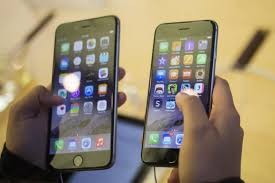Even as Apple has recently been facing rough times owing to declining demand for its iPhones, the Cupertino-based tech titan is endeavoring to introduce thorough changes to its next-gen iPhones with a view prompt existing iPhone users to upgrade.
On Feb. 2, the United States Patent and Trademark Office granted Apple a new patent for its next-gen iPhones, fuelling speculations that soon it would be possible to operate the devices without touching their display physically, ValueWalk reported.
Filed in March 2015, the new patent states that instead of touch, the new device will be using infrared LEDs to identify finger or palm. The system would be employing photodiodes or any other hardware capable of proximity-sensing connected to the existing force-sensitive 3D Touch abilities of the iPhone.
This new technology will enable the users to operate their iPhones just by moving their fingers over the handset's display and pressing the virtual buttons developed by rebounding infrared light produced from LEDs into the photodiodes. Also, the new technology has the potential to enhance the battery life of the device, in addition to saving space.
Despite being a valuable feature, Apple is unlikely to incorporate it in the iPhone 7 and iPhone 7 Plus, which are expected to be launched in September, Apple Insider reported. The Cupertino tech giant has still not rolled out the relatively 3D Touch for several of its devices and if it releases the new hover-touch technology now, it may make the issue messy.
Another patent granted to Apple based on user interaction-based offers hints of the company's plans to bring in 3D Touch to the home button. This technology would be functional by putting together electrodes beneath the home button and they would create a network when pressed. As a result, users will have several new options subject to the amount of pressure they apply.
Explaining the 3D Touch technology, the patent says while the user can unlock an iPhone by a light touch with a registered finger, pressing the home button deeply will unlock the device in addition to performing other operations, such as opening an app. The patent further adds that the users will also be able to map contextual commands by applying different pressure levels, like replying to a received message by selecting intelligent responses.
Incorporating these technologies into the next-gen iPhones is also likely to bring about a great change in the design of the handsets, as a force-sensitive touch home button could mean that the buttons will not be a physical feature any more, but just a flat surface.
Watch Apple patents reveal new uses for 3D Touch on the iPhone:



























